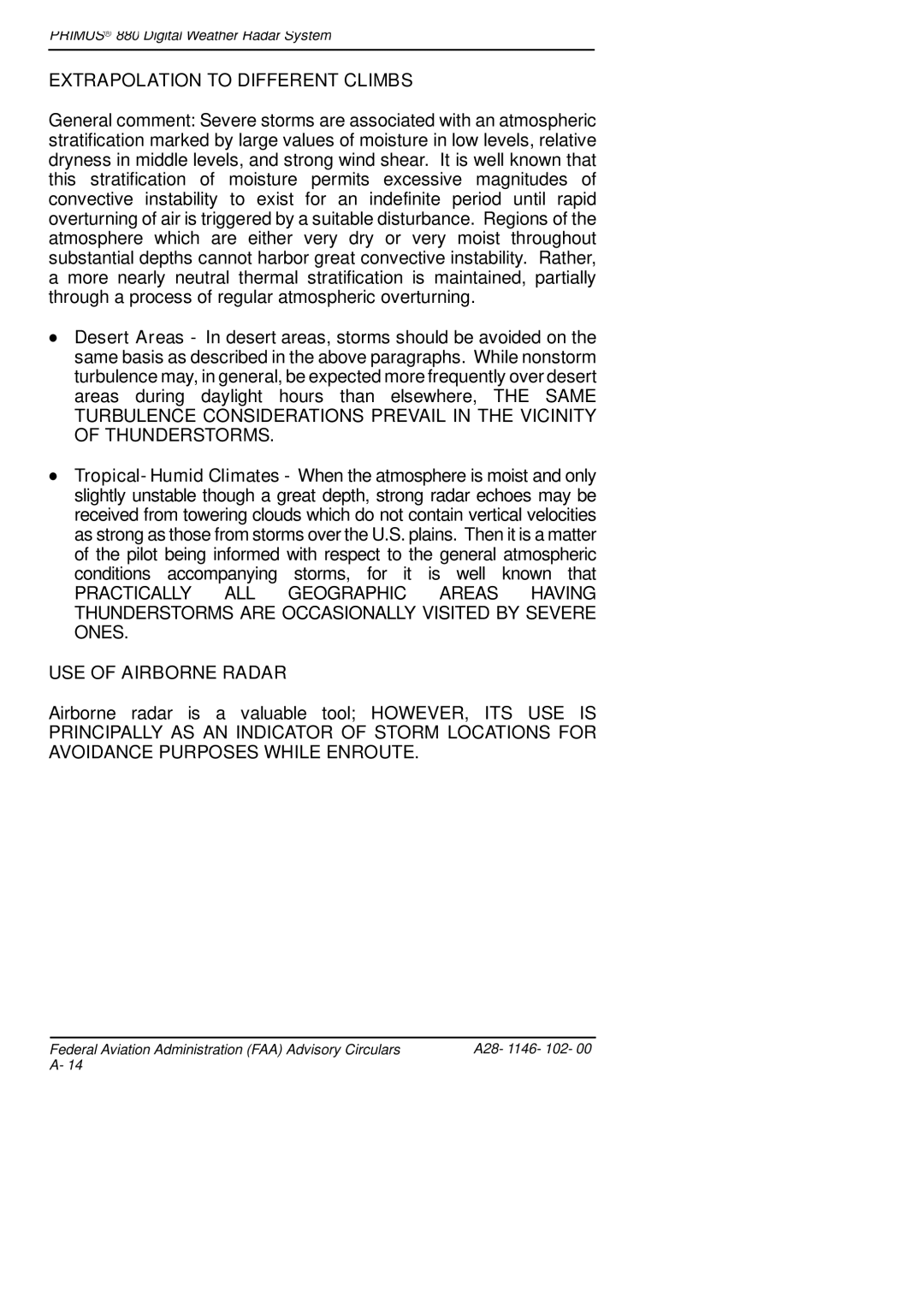
PRIMUSr 880 Digital Weather Radar System
EXTRAPOLATION TO DIFFERENT CLIMBS
General comment: Severe storms are associated with an atmospheric stratification marked by large values of moisture in low levels, relative dryness in middle levels, and strong wind shear. It is well known that this stratification of moisture permits excessive magnitudes of convective instability to exist for an indefinite period until rapid overturning of air is triggered by a suitable disturbance. Regions of the atmosphere which are either very dry or very moist throughout substantial depths cannot harbor great convective instability. Rather, a more nearly neutral thermal stratification is maintained, partially through a process of regular atmospheric overturning.
DDesert Areas - In desert areas, storms should be avoided on the same basis as described in the above paragraphs. While nonstorm turbulence may, in general, be expected more frequently over desert areas during daylight hours than elsewhere, THE SAME TURBULENCE CONSIDERATIONS PREVAIL IN THE VICINITY OF THUNDERSTORMS.
DTropical- Humid Climates - When the atmosphere is moist and only slightly unstable though a great depth, strong radar echoes may be received from towering clouds which do not contain vertical velocities as strong as those from storms over the U.S. plains. Then it is a matter of the pilot being informed with respect to the general atmospheric conditions accompanying storms, for it is well known that
PRACTICALLY ALL GEOGRAPHIC AREAS HAVING THUNDERSTORMS ARE OCCASIONALLY VISITED BY SEVERE ONES.
USE OF AIRBORNE RADAR
Airborne radar is a valuable tool; HOWEVER, ITS USE IS PRINCIPALLY AS AN INDICATOR OF STORM LOCATIONS FOR AVOIDANCE PURPOSES WHILE ENROUTE.
Federal Aviation Administration (FAA) Advisory Circulars | A28- 1146- 102- 00 |
A- 14 |
|
